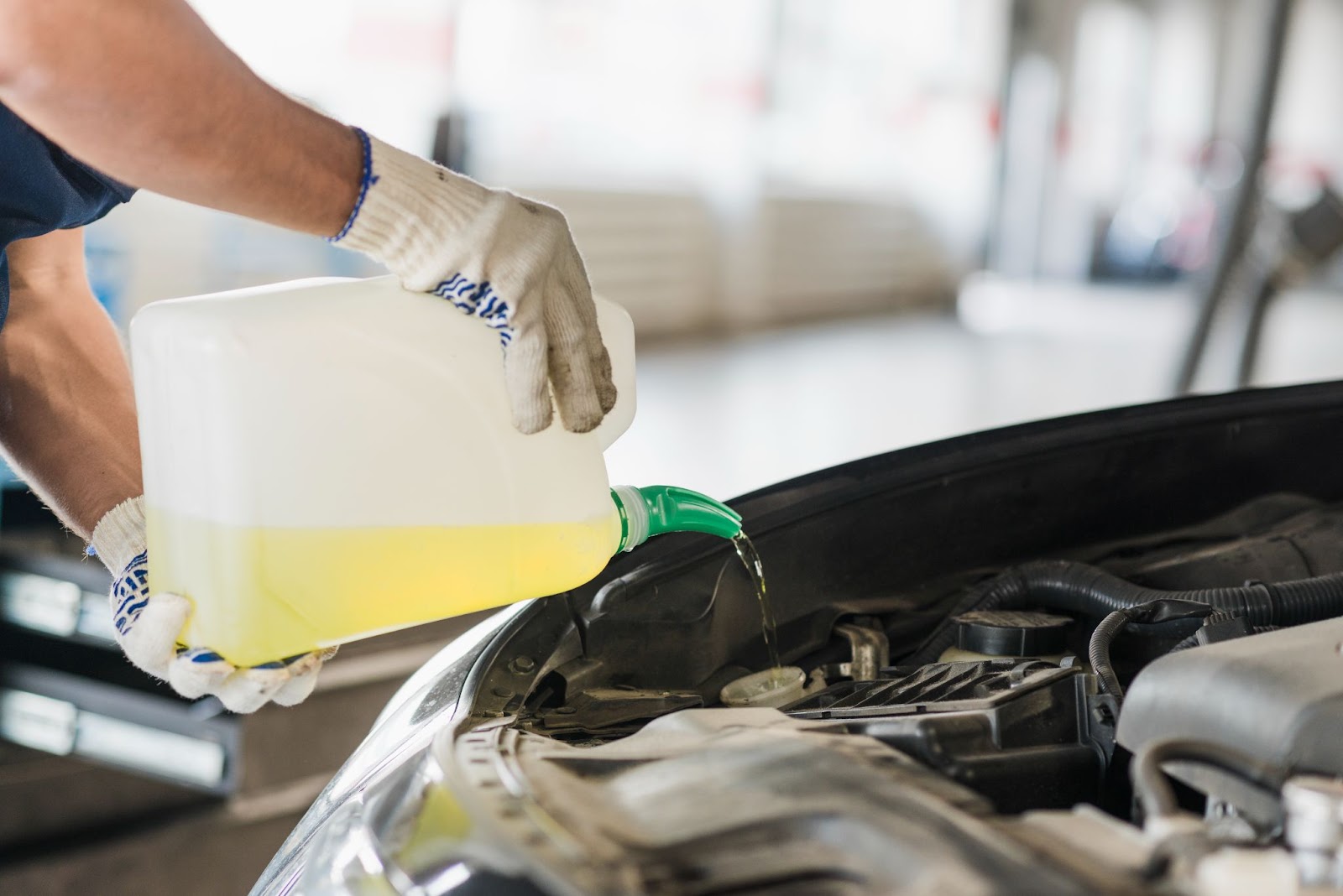Transmission Leak Symptoms

The transmission in a car plays a huge role: it helps ensure that the engine’s power is properly transferred to other parts without going too fast or too slow. Without a transmission to regulate the power reaching the wheels, there is no way to move the vehicle forward or control the speed at which the wheels turn.
A key component of your vehicle’s transmission is the transmission fluid, which lubricates the moving parts and provides the necessary pressure to ensure it functions efficiently. Although transmission fluid should be replaced every 60,000 to 100,000 miles, sometimes a transmission repair may be needed before that time comes.
There are several signs that can indicate a possible transmission fluid leak. One of the most common is the appearance of reddish-brown stains on the ground. It may seem like a minor issue, but ignoring it can lead to costly repairs. However, there are other transmission leak symptoms you should be aware of.
Causes of a Transmission Fluid Leak
A transmission leak is one of the most common problems vehicles face, but that doesn’t make it minor. Leaks can be severe and may cause the car or truck to break down, sometimes quite severely.
There are different ways in which transmission fluid can leak. The most common is through a hole in the transmission, or when the seals surrounding the transmission begin to leak. Transmission fluid leaks can also occur when gaskets or O-rings start to leak.
Signs of Transmission Fluid Leaks

Check the Dipstick
The first step in diagnosing the problem is to verify the transmission fluid level by checking the dipstick. Remove the dipstick, clean it, reinsert it, and remove it again. The fluid should appear pink and nearly transparent. If it is brown, it needs to be replaced.
Pay Attention to the Dashboard Warning Light
The transmission light on the dashboard may illuminate for a variety of reasons. If it does, it is recommended to consult the owner’s manual to see what it specifically indicates. If the light remains on, it is a good idea to take the car to a mechanic for a proper diagnosis.
Fix the Gears
When the transmission fluid level is low, the transmission does not perform correctly. This can lead to suspicious symptoms, such as gears grinding. This sound could also indicate that the transmission synchronizer is damaged.
Listen for Metallic Sounds
If your transmission begins to make a metallic noise, it alerts you to a possible transmission problem. This is one of the easiest signs to detect, so as soon as you notice it, do not delay taking it to a repair shop.
Feel a Strange Vibration
You might notice a strange vibration while driving, likely caused by slipping gears. Since the fluid level is low, the transmission cannot operate as designed, resulting in unusual performance such as extreme sluggishness or a sudden increase in speed.
Notice Noises in Neutral
Not all noises your car makes should be a cause for concern, but if it starts making new sounds—such as when changing gears or when in neutral—it could be a symptom of a transmission leak.
Extreme Transmission Heat
Your car’s transmission does a lot of work. That’s why it’s so important to have the right amount of fluid. When the fluid level is low, the gears do not have sufficient lubrication and can begin to heat up. When the transmission overheats, you may feel the heat rising from the transfer case through the floor and notice a strong burnt smell.
How Long Can I Drive with a Transmission Leak?
Driving a vehicle with low transmission fluid levels can cause potential damage to the transmission system due to inadequate lubrication. Some consequences include increased friction and heat within the transmission components, leading to accelerated wear and potential overheating.
Continuing to drive a car with low transmission fluid can result in transmission failure, which may lead to costly repairs or even the complete replacement of the transmission. In short, it is recommended that as soon as you suspect a leak, you consult your trusted mechanic.
How to Prevent Future Transmission Fluid Leaks

Routine Maintenance
It is essential to check your vehicle’s transmission fluid levels during oil changes and top it up as needed. If you notice any signs of leaks or other issues that could lead to a transmission fluid leak, it is important to address them immediately.
Early Leak Detection
Detecting possible transmission fluid leaks early can save you time and money in the long run. A transmission leak detection kit with fluorescent dye and ultraviolet light can be a valuable tool for identifying the source of a transmission fluid leak.
Transmission Leak? Pay Attention!
At the first sign of transmission fluid problems, it is best to take action immediately. Regularly replacing the transmission fluid is a common maintenance procedure to avoid costly repairs and keep your vehicle running smoothly.
